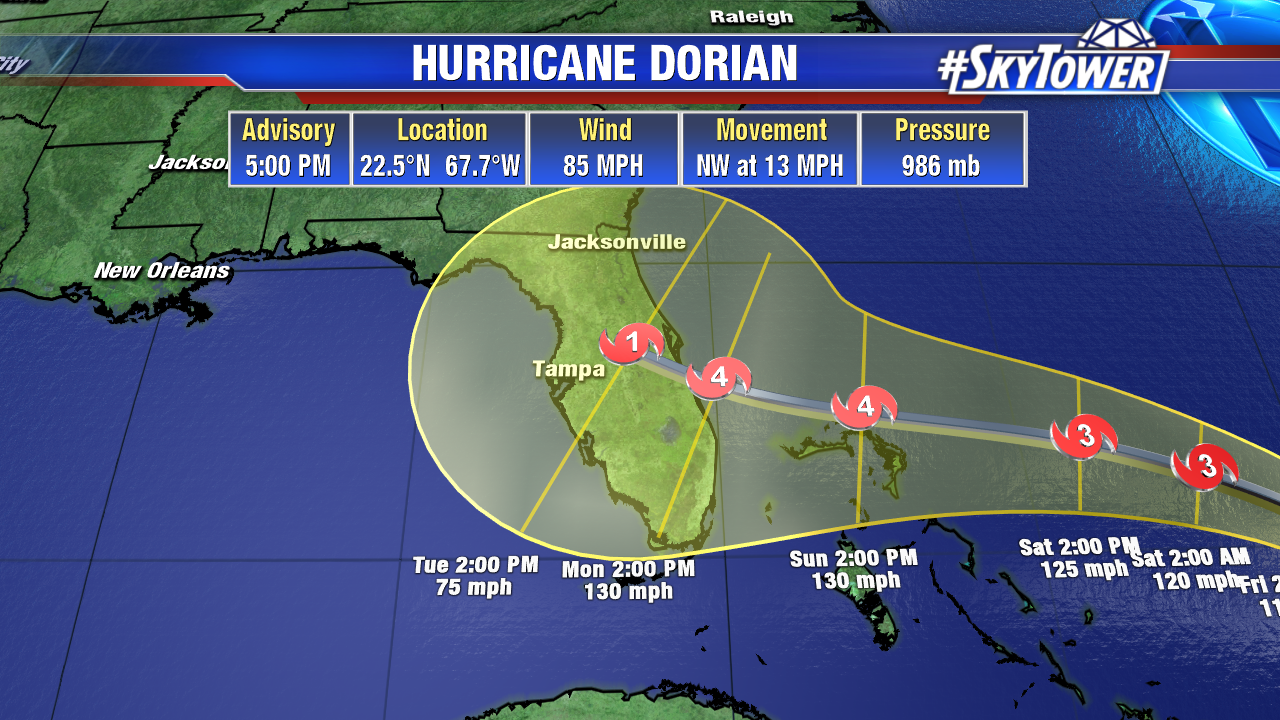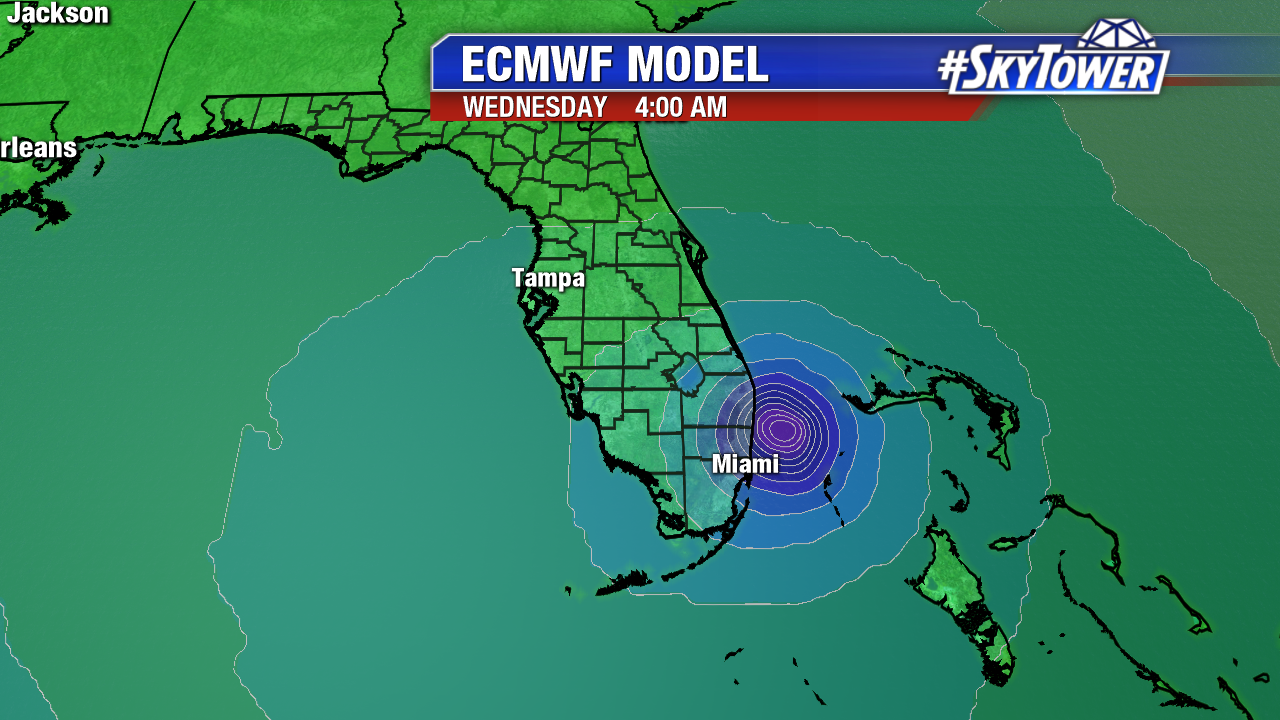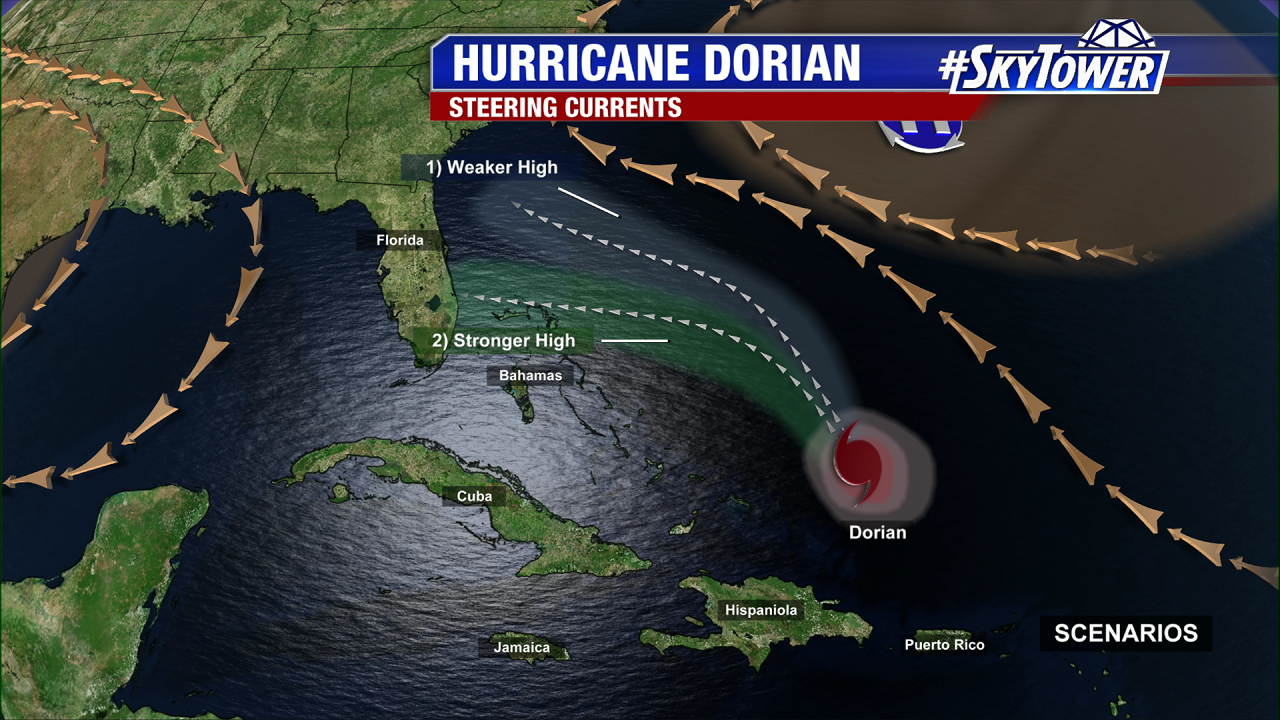As of 5pm Thursday, max winds are sustained at 85 mph. The storm was moving northwest at 13 mph. Hurricane Dorian will be steadily strengthening going forward as it moves over very warm water, and takes advantage of low wind shear and a lack of dry air.

This afternoon’s model runs have unfortunately provided us with more questions than answers. In particular, the latest ECMWF run take the storm further south, slows it to a crawl with landfall in South Florida before riding up the East Coast of the state.

Forward speed is really a big factor. The slower Dorian moves toward Florida, the more likely it is to find a weakness in the ridge and turn north. If it moves faster, the ridge will likely keep it on a westerly track into Florida.

The one thing we have to understand here is that the atmosphere behaves like a fluid. There’s a lot of cause and effect, in regards to several different variables, that will ultimately decide where Dorian will end up and when. Until models get a better handle on things and more consensus on a particular solution, which should happen over the next 48 hours or so, we can’t nail down local impacts. Right now, especially along Florida’s East Coast, folks need to be preparing for the possibility of a major hurricane landfall some time early next week.
